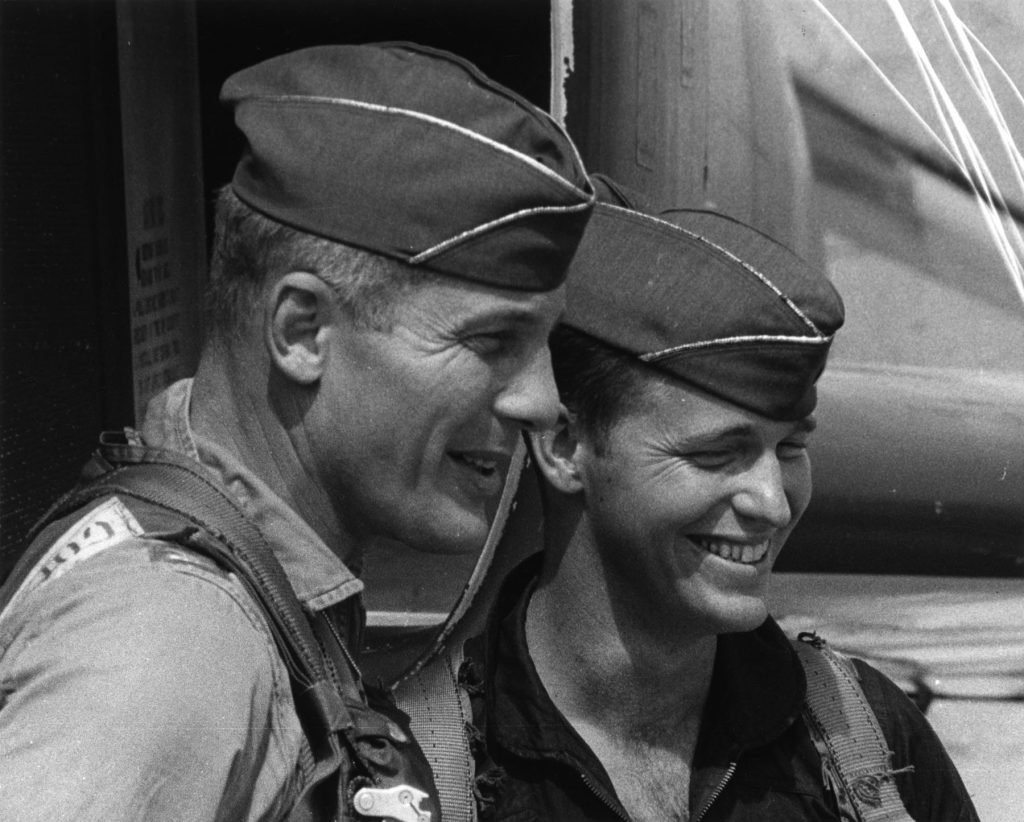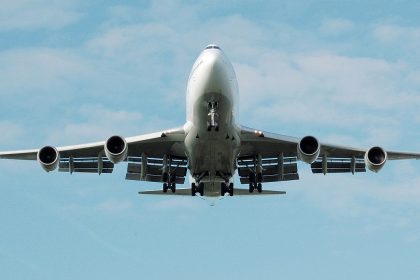By National Museum of U.S. Air Force
Led by Col. Robin Olds, OPERATION BOLO used a brilliant deception tactic that destroyed half of the North Vietnamese MiG-21 fighter force, with no USAF losses.
In late 1966, the USAF was not permitted to bomb North Vietnamese airfields and could only destroy enemy fighters in the air. Complicating the problem, enemy MiGs focused on bomb-laden F-105s and only initiated combat when they had a clear advantage. Col. Robin Olds, 8th Tactical Fighter Wing (TFW) commander, and the wing’s tactics officer, Capt. John “J.B.” Stone, devised a masterful plan to lure and trap North Vietnamese MiG-21s by mimicking an F-105 bombing formation.

On Jan. 2, 1967, 8th TFW F-4s entered North Vietnam from the west using the same route, altitude, and formation as an F-105 bomb strike. They also carried and operated electronic jamming pods used by F-105s. The North Vietnamese took the bait, and the MiGs came up to intercept what they thought was an F-105 strike. At the same time, 366th TFW F-4s came into North Vietnam from the east to block the MiGs’ escape to China and to orbit their bases, preventing the MiGs from landing.
Despite some problems caused by the overcast weather, OPERATION BOLO was triumphantly successful. During the 12-minute engagement, seven North Vietnamese MiG-21s — about half of their operational force — were shot down with no USAF losses. Four days later, another ruse, this time mimicking an F-4 reconnaissance flight, shot down two more MiG-21s. These crippling losses greatly reduced MiG activity for several months.

Brig. Gen. Robin Olds’ hallmarks were boldness, courage, and leadership. A World War II ace and Air Force Cross recipient, he gained widespread fame and respect as the aggressive commander of the 8th Tactical Fighter Wing during the Southeast Asia War.
Robin Olds grew up amongst military aviators and aircraft — his father was a World War I pursuit pilot, an aide to Brig. Gen. Billy Mitchell, and commander of the first B-17 squadron. Robin Olds attended West Point, where his characteristic boldness allowed him to excel on the football field — in 1942, he was selected as an All-American tackle. After Olds graduated in 1943, he attended flight training and went to Europe as a P-38 pilot.

Olds stood out as a daring pilot and a natural leader. Within a few months, he shot down five enemy fighters to become the 479th Fighter Group’s first ace. At the very young age of 22, he was promoted to major and given command of the 434th Fighter Squadron. Olds continued his success after the unit converted to P-51s, and he ended the war with 12 victories.
Following World War II, Olds flew in the first P-80 jet demonstration team, followed by command of several operational units, and then staff jobs. Unable to get a combat posting during the Korean War, Olds became determined to get into combat when the Southeast Asia War escalated.
In the fall of 1966, Olds took command of the 8th Tactical Fighter Wing (TFW) at Ubon Royal Thai Air Force Base. Olds’ charisma and courage endeared him to his people, and under his leadership, the “Wolfpack” became the USAF’s top MiG-killing wing in Southeast Asia. Olds also played a key role in the creation of the Red River Valley Fighter Pilots Association, which improved coordination between USAF wings in Southeast Asia and became a lasting fraternal organization.
Olds led from the front — he shared the same risks as his aircrews by flying on the most dangerous missions. He received many decorations for his audacity in combat, including the Air Force Cross for a mission in August 1967, when he led a strike force against the heavily-defended Paul Doumer Bridge in North Vietnam.

The crowning achievement for Olds was planning and leading OPERATION BOLO, when North Vietnamese MiG-21 pilots were tricked into an air battle at a disadvantage. Olds shot down a MiG-21, and his 8th TFW F-4 aircrews shot down six others with no losses. He also shot down three other MiGs during his tour. When added to his WWII victories, his lifetime victory totaled 16 enemy aircraft.
Olds returned from Southeast Asia in December 1967. Promoted to brigadier general in 1968, he became the commandant of cadets at the U.S. Air Force Academy, and he retired from active duty in 1973.






























